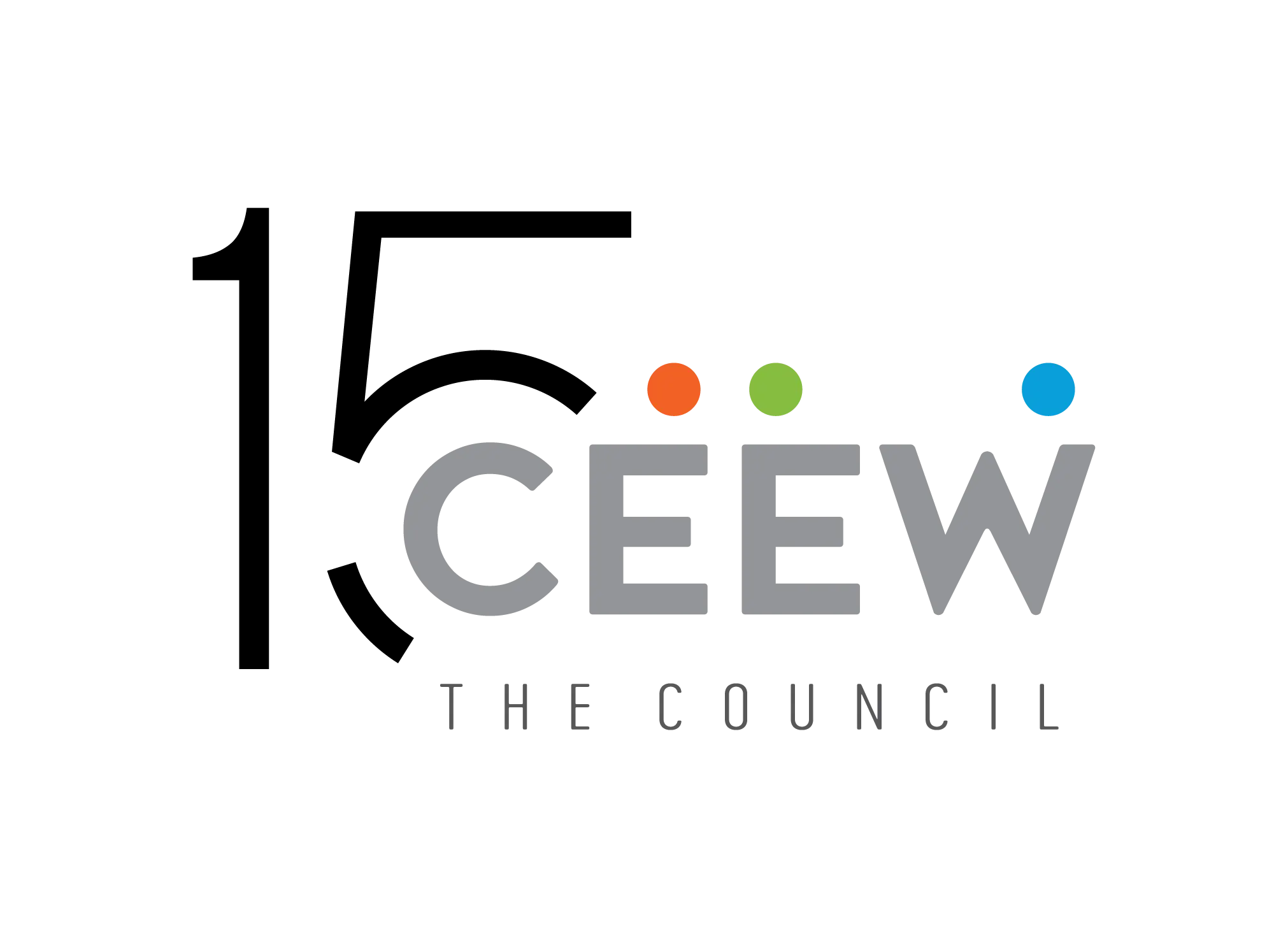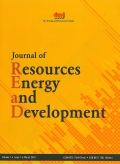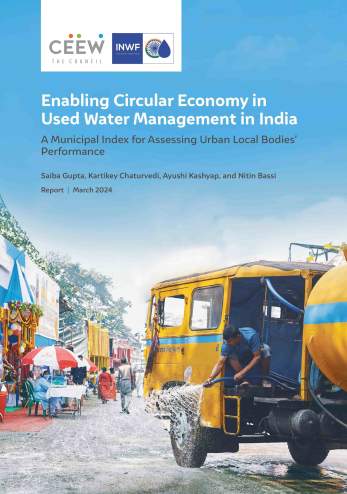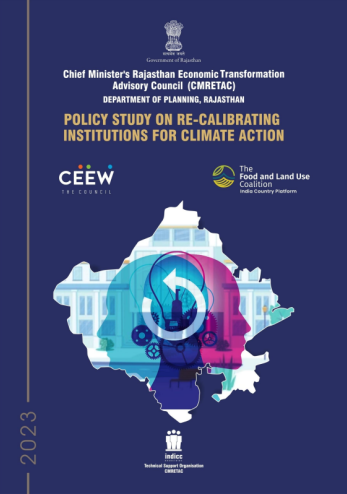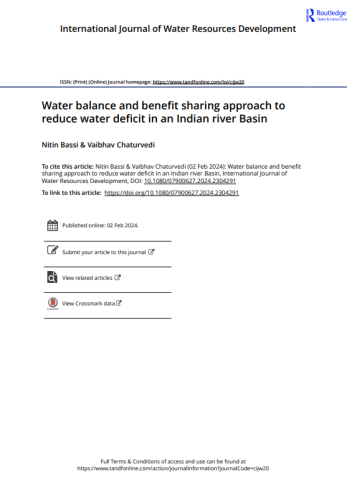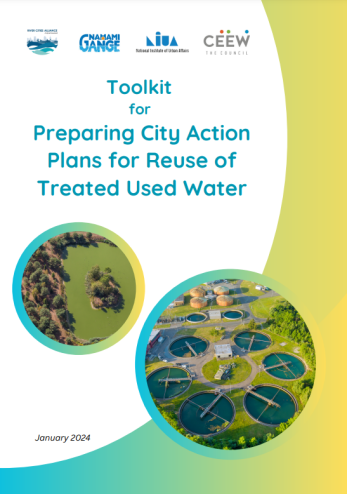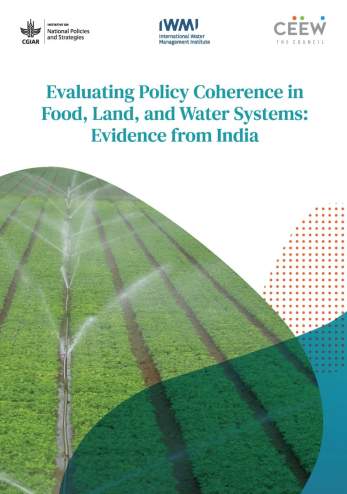Paper
A multi-dimensional approach for building water-secured cities in India
Rudresh Sugam, Kangkanika Neog
April 2016 | Sustainable Water
Suggested Citation: Sugam, Rudresh Kumar and Kangkanika Neog. 2016. “A multi-dimensional approach for building water-secured cities in India.” Journal of Resources, Energy and Development, 13 (1&2).
Overview
This journal paper examines the social, economic, and environmental dimensions needed for formulating sustainable urban water management policy (UWM) reforms for Indian cities. The study discusses water management in an urban area against five dimensions—(i) social, (ii) economic, (iii) environmental, (iv) political, and (v) science & technology, for defining essential steps for the decision-makers in developing a water-secure city in India. Further, the study recommends 10 policy reforms, addressing data, capacity, informal sector, pollution, etc., to achieve the target of water for all and building water-secured cities. Based on the situation and demand, the suggested policy reforms will have to be prioritised.
Key Highlights
- As per 2011, 30 per cent of urban Indian households did not have access to water within their premises and 18.6 per cent did not have access to any form of sanitation facilities.
- Of the 70 per cent urban population that receives water within premises, only 62 per cent receives water from treated sources.
- It is necessary for the service providers to integrate an independent public feedback mechanism on the water supply system in order to understand the quality and service provided as well as public demand.
- In Agra, the Centre for Urban and Regional Excellence (CURE) has set up local water treatment plants with kiosks and business enterprises. These treatment pants provide doorstep supply at affordable rates. They are managed by women.
- The Planning Commission Report in 2011 criticised urban water planning in India on the account of using unreal numbers on water use by different economic sectors due to the absence of a database, poor water management, and unequal supply, for not addressing huge water losses, etc.
- An integrated lake conservation plan was conceived in Bhopal with the financial assistance from Japan Bank of International Cooperation.
- The conservation work in Bhopal from 1995 to 2004 consisted of activities such as the demarcation of no construction zones, the creation of buffer zone between lakes and human settlement, better wastewater, and solid waste management, and public awareness campaigns.
- Wetland acts as natural sponges in case of urban flooding. However, construction over wetlands and the inflow of sewage have affected the health of these wetlands.
- The water tariff should be set in a participatory way that ensures transparency and discourages wasteful use. The estimation of losses could only be done if the area is metered.
Key Recommendations
- Connect the poor for livelihoods: Provide better quality water to Low Income Group (LIG) colonies leading to improved livelihoods.
- Endorse collective action: Bring the community in the decision-making process so as to increase their faith in the system. Making people aware of their resources, supply systems, consequences of inaction, etc., should be part of the policies.
- Ensure informed water tariffs, penalties, and incentives for efficient water use: Reform water tariffs using transparent and participatory processes and adopt innovative concepts, such as cross-subsidisation, payment in installments, and output-based aids to provide water to all at affordable prices.
- Treat wastewater as a source of water augmentation in cities: Modify Waste Water (WW) reuse and recycle policies in order to prevent large-scale pollution of rivers and derive maximum benefits.
- Abate pollution for healthy rivers, cities, and ecosystem: Penalise large-scale polluters and monitor water pollution levels regularly by creating well defined plans targeting capacity building and action at local and inter-state level.
- Ensure better groundwater regulations for preventing overexploitation: Develop more stringent urban policies on over extraction and pollution of groundwater and delineate zones of drinking water for getting good quality drinking water in cities.
- Focus on robust database for estimating carrying capacity and long-term planning: Focus on data collection for a better understanding of overall usable water resources and estimating the carrying capacity of cities.
- Upgrade technology for increasing water usage effectiveness (WUE): Invest in supervisory control and data acquisition (SCADA) which offers a lot of benefits and is a long-term profitable investment as India cannot afford high Net realizable value (NRW) values.
- Account for climate change impact: Build climate resilience through adaptation activities, climate-proofing of existing and future water assets, disaster risk reduction, etc.e. Inclusion of climate change in the UWM policy is essential.
- Develop capacity for informed action: Develop capacity and awareness of communities, municipalities, district, and state-level officials, to achieve the desired goals and to influence a change in mindset./li>
Reform water tariffs using transparent and participatory processes and adopt innovative concepts, such as cross-subsidisation, payment in installments, and output-based aids to provide water to all at affordable prices.
